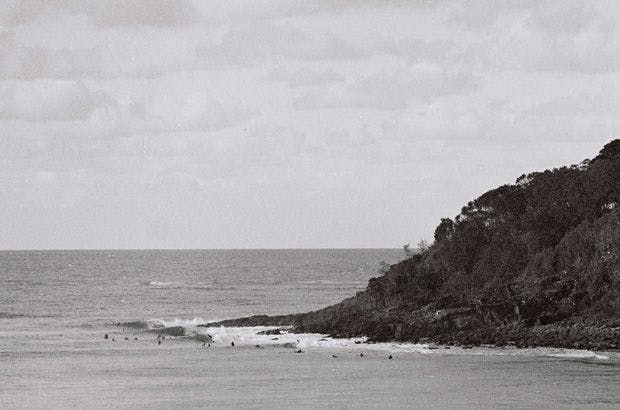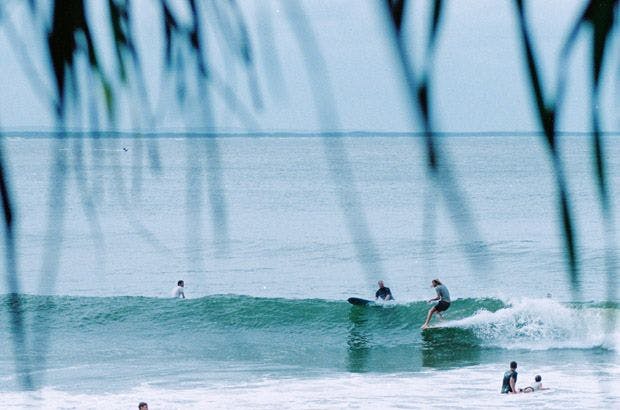TravelDeparture Gate: Noosa Heads

February and March on the East Coast of Australia are the middle of cyclone season, a period when sub tropical cyclones push swell onto the myriad point breaks of the coast of Queensland. Whilst the WSL carnival kicks off on the Gold Coast, further north on the Sunshine Coast the other side of the tribe gather for the Noosa Festival of Surfing. The point breaks of Noosa, which break along the fringes of its National Park, are rare beauties which have come to symbolize longboard surfing in the Southern Hemisphere and make it the target destination for many traditional loggers the world over.

Image: Romain Juchereau
Noosa Heads is the location of a series of five north-facing right hand point breaks that, although incredible when they do break, don’t break with particular consistency. With the prevailing swell direction for Australia’s East Coast being south easterly the headland of Noosa National Parks blocks all but the largest of swells from wrapping into its protected points, and the optimum swell direction is from the east or north east with the wind blowing from the south.

Image: Romain Juchereau
Starting at the top of the line, a good half hour walk through the National Park, you’ll find Granite Bay. Being a bit of hike keeps the crowds thinnest this far out which is a plus, however being the most exposed of Noosa’s points means that Granite not only gets the most swell, but the most wind also. The quality of the wave here depends to a large extent on the quality of the sand lining the point, and therefore it rarely shows the same great form as its little siblings, which may cause you to hesitate before bushwhacking your way out there.

Image: Romain Juchereau
The next in line is Ti Tree (or Tea Tree), which breaks down a boulder lined point and provides steeper and often hollow rides, particularly when the tide is lower. The rides can be long here, although it can get busy thanks to its quality.

Image: Romain Juchereau
National Park is the classic Noosa Heads point break. It has a challenging take-off spot called the “Boiling Pot” at the top of the point that can be fast and sucky, however success here places surfers in the best position for a fast run along the sectiony wall that can sometimes link up all the way through to the next point, Johnsons. National Park is best surfed on a low to mid tide to avoid tripping over any of the rocks that line the point. Should you get a good wave here, you could end up running into the next point closer to town; Johnsons. This wave continues to hold some size and can be a fast wave, however as you get closer to town the crowds increase drastically. The closest point break to Noosa’s main beach and the accompanying car parks and coffee shops is First Point. Often very busy thanks to its ease of access and surfability, it presents the smallest waves of Noosa’s options but is nonetheless a perfect peeling wave. Expect the full range of surfers at First Point, from absolute beginners through to some of the World’s top longboarders.

Image: Romain Juchereau
So whilst inconsistent and often crowded, when a cyclone swell hits the point breaks of Noosa offer visiting surfers fantastic waves in a beautiful environment. That’s why so many surfers turn right out of Brisbane airport and aim for the Sunshine Coast, and why some of the World’s most influential longboarders have made Noosa their home.
WHERE: Brisbane (BNE)
WHEN: January to April
WHY: A series of right hand point break waves in a National Park environment, beloved of longboarders.
HOW: Traditional mal, mid-length, and maybe even slide an alaia into the bottom of your boardbag too…